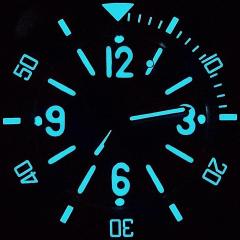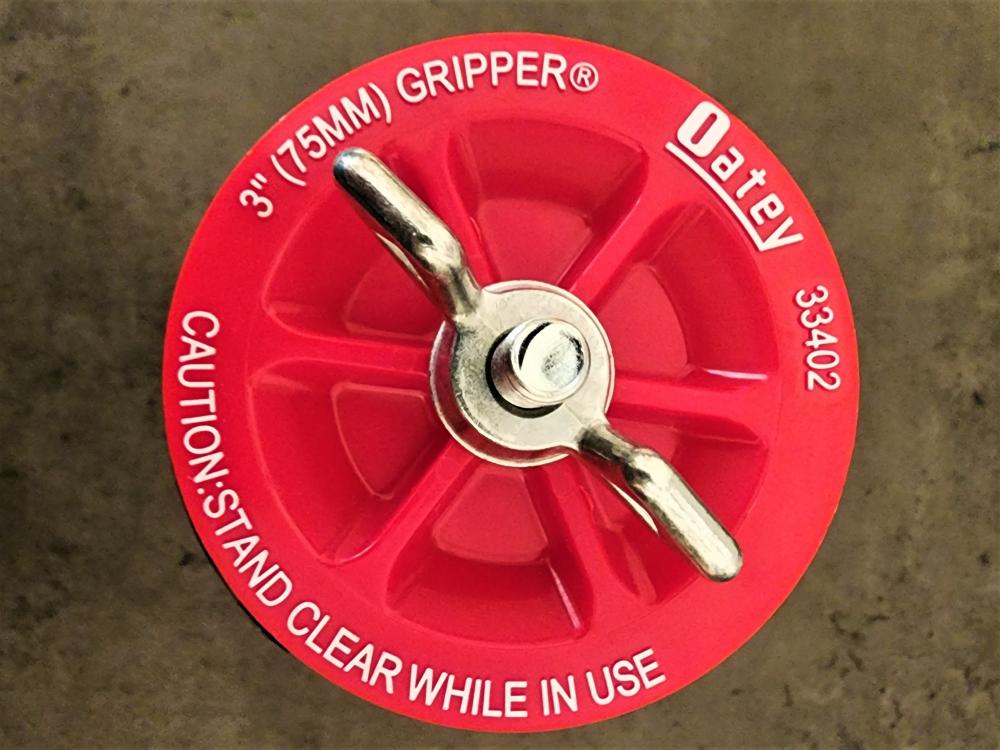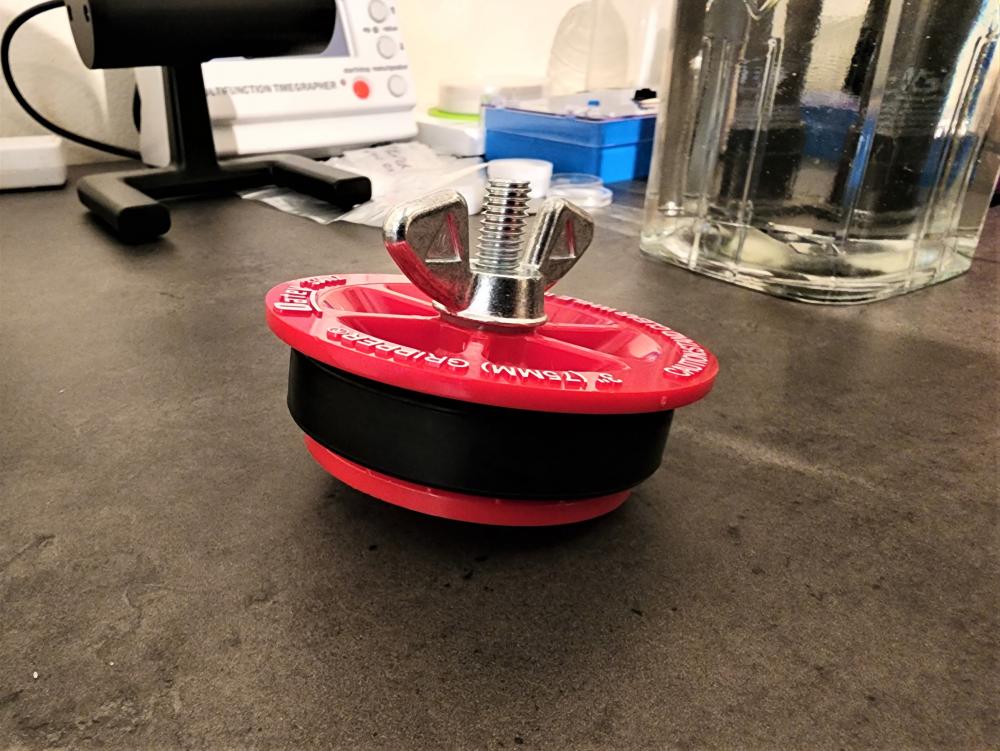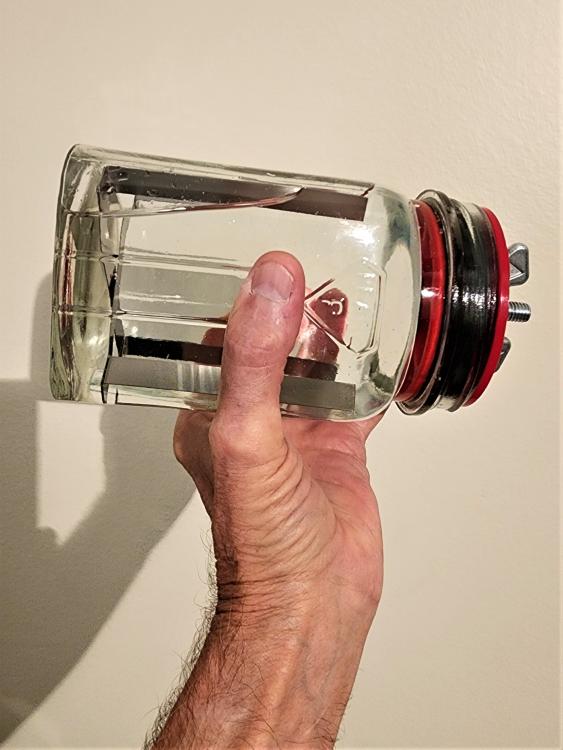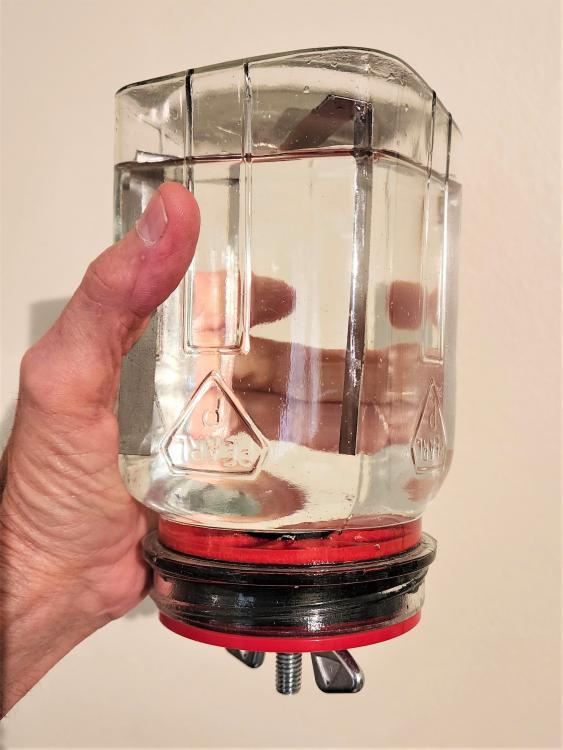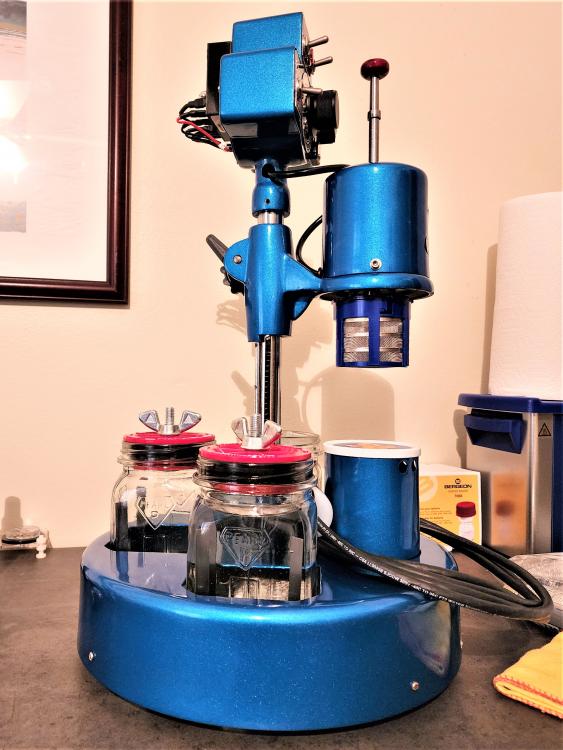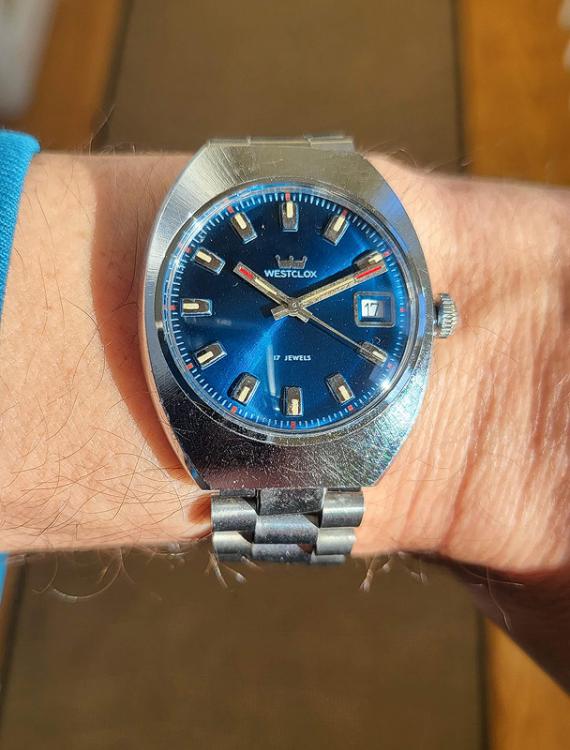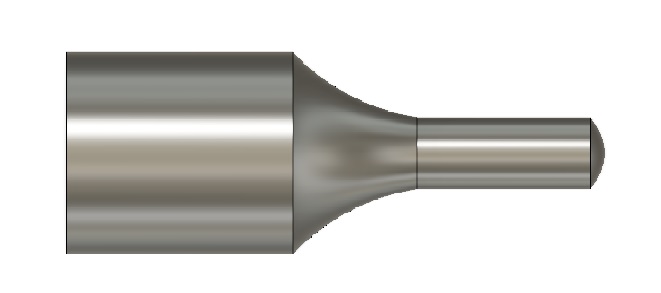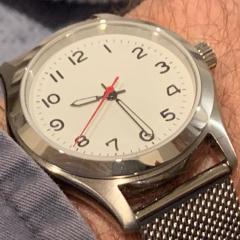Leaderboard
Popular Content
Showing content with the highest reputation on 12/17/22 in all areas
-
I know I shouldn't brag but a casual visit to a charity shop in 2012 got me this IWC 8531 for $10. The staff mustn't have known the value of the watch and I certainly didn't then but I did like the look of it and it started to work when I shook it but stopped shortly after. A service from a seasoned Watchmaker in my area proved successful (crown and stem and crystal replaced, not IWC). I wear it occasionally and enjoy it.3 points
-
Yes, if it's a proper service job recleaning is really the only way. Contamination is one issue, but also when getting the wheels and such back in place the oil will inevitably get smeared across the jewels, which make a path for it to wick away over the coming weeks. And I know it wasn't mentioned, but Rodico is not for cleaning up oil. The Rodico itself will leave a residue the makes a path for oil creep.3 points
-
3 points
-
I love the blue dial on this Westclox. The FE 140-1B was a joy to work on. All bridge screws, including the pallet bridge, and even the setting lever screws, were the same screws. Even the dial feet screws took the same size screwdriver as the bridge screws. I love that the calendar guard plate has a cutout for the date jumper spring so you can place the spring after first securing the guard plate. I wish every movement had that.2 points
-
2 points
-
Thank you for your kind words @RickTock and glad my Vostok cal. 2409 walkthrough could be of help! I somewhat recently serviced a Vostok 2431 and it uses the exact same type of calendar complication as the Vostok cal. 2414. You'll find my service walkthrough of it here. Anyway, I'll include the assembly pictures for the calendar works in this post for your and any future Watch Repair Talker's convenience. The only difference is that the cal. 2414 doesn't have what I call the "1st intermediate date indicator wheel" so you can simply ignore that part. I include the picture where the "1st intermediate date indicator wheel" is assembled anyway since it shows lubricating the upper section of the cannon pinion. Unfortunately, it has become increasingly difficult to source parts for Russian movements as Russian sellers have been banned on eBay. Good luck with your reassembly!2 points
-
@VWatchie, thank you so much for posting this detailed service walk-through. I stumbled across this by accident, and decided to take a closer look because I was curious how close the 2409 movement is to the 2414 I'm currently working on. Well, you already know the answer! Was I ever happy! A story about my 2414: This is the second movement I've completely disassembled in my quest to learn about watchmaking. I pulled it apart a couple months ago, reassembled it for practice prior to cleaning, then disassembled and cleaned it. Had everything ready for final assembly and the first thing I did was break the mainspring. Fitting the mainspring to the barrel by hand went fine during my trial run, but somehow finger cots simultaneously reduced both my dexterity and IQ... So, the watch has been apart for a while while I figured out what mainspring I needed and where to get one in Canada. Then it had to ship across the country. And I've sourced a mainspring winder. Then I got COVID (today's the first day I'm feeling mostly normal again). In the back of my mind, I've been wondering how good my memory will be when I finally sit down to put the movement together. I have some reference photos and notes, but nothing like what you have documented. What a gift! Oh, and I've been looking all over for a 2414 tech sheet with lubrication info. Finding none, I was going to transpose from a Sellita tech sheet and do my best. Can't tell you how happy I was to see the lubrication info you included. Thanks and respect to you.2 points
-
Introduction This service walkthrough is not a tutorial on how to service a watch movement. I made it for myself because I think it's fun and because it will make it easier the next time I service a Vostok 2431. I also think it feels nice to be able to share this walkthrough considering all the valuable information that many very talented members on WRT freely share. Many, many thanks! There is a lot to learn when servicing a watch movement that is not covered in this walkthrough. Therefore, I recommend, for example, watchfix.com, learnwatchmaking.com, or timezonewatchschool.com. I feel like I got the most bang for my buck at watchfix.com (I'm not sponsored in any way) but I've also had a lot of fun and benefited from the other online schools. Links to photos on my OneDrive Vostok calibre 2431 disassembly walkthrough. Please sort the images by name in ascending order. Vostok calibre 2431 assembly walkthrough. Please sort the images by name in ascending order. Curiosities I think it was in 2014 or possibly 2015 that I bought my Sturmanskie Open Space. I had just discovered that there were watches where the hour hand only rotates one revolution per day and at that time I knew absolutely nothing about watch movements, service and repair. The idea that the hour hand of a watch only rotates one revolution per day seemed not only completely logical but also different and fascinating. The earth rotates one revolution around its axis per day, so it should be obvious that the hour hands of our watches do so too. The fact that the letters on the watch were also Cyrillic did not make the whole thing any less exciting. I just couldn’t resist it and I’m happy I didn’t! Vostok claims that their movements only need a service every 10 years, and I think that's true because the tolerances are pretty rough and therefore large amounts of dirt are needed to stop a Russian movement or even cause it to run badly. It has been said that the amount of dirt required to stop a Vostok movement is enough to stop a hundred Patek Philippe movements However, the price for this endurance is a movement that doesn't come close to the precision offered by high-quality Swiss and Japanese movements, but it's still quite easy to get these Russian movements to run accurately as long as they're worn and used consistently. About the movement Russian watch brands such as Vostok, Raketa, and Poljot, to name a few, are known for using their in-house movements, but not this Sturmanskie which is instead powered by a Vostok calibre 2431, which is a 24-hour movement. However, it is not a true 24-hour movement. That is, the movement is not originally designed as a 24-hour movement. Instead, Vostok has modified the movement in its calibre 2416B so that the hour hand only rotates one revolution per day. Calibre 2431 is otherwise identical to Vostok automatic calibres 2416B and 2415. The motion work(/dial train) in Vostok 2431 The way that Vostok modified the movement so that the hour hand only rotates one revolution per day is by modifying a) the minute wheel, b) the bearing for the minute wheel in the main plate, and c), adding an intermediate date indicator wheel. The minute wheel has been modified so that it has two pinions that lie on top of each other. The lower pinion drives what I call the first intermediate date indicator wheel while the upper pinion drives the hour wheel and has been adjusted so that the hour wheel only rotates one revolution per day. The number of teeth on the hour wheel itself may have also been adapted, but this is not something that I have investigated. Normally the minute wheel is mounted on a regular metal post on the main plate, but in this case, Vostok has replaced the post with a beefy, jewelled bearing. I assume that this has been necessary to get the minute wheel, with its two pinions on top of each other, to rotate sufficiently smoothly and stably. The added first intermediate date indicator wheel drives the second intermediate date indicator wheel which is part of Vostok's regular (non-modified) calendar complication. And this is what it looks like with the hour wheel mounted. Cleaning I have found that it is all too easy to underestimate the importance of cleanliness when servicing a movement, perhaps because the parts are microscopic and therefore it takes time to get used to thinking microscopically, even though I have been doing this now for five years. Cleaning of pinions and pivots A type of watch movement part that is particularly important but also difficult to get completely clean is pinions, but @nickelsilver advised me quite recently that in its pre-cleaning you can dip and rub the pinions in pith wood that you have impregnated with an effective degreasing agent, for example, Horosolv. I've done it several times now and it works amazingly well. Speaking of pinions, independent American watchmaker Josh Shapiro mentioned in a podcast that he considered pinions to be the most difficult part of a watch movement to make perfectly. Whether it's true or not I don't know but I think it's likely. To get the pivots clinically clean, I have also started using EVEFLEX, but you have to be careful because the material has an abrasive effect. It is important to choose the right polisher and to be careful. I have summarized my experiences with EVEFLEX in this post and I mention it because EVEFLEX is easy and quick to work with and gives me very good results. End-shake If there's one thing I've learned this time around, it is that a Russian movement cannot be converted to a Swiss movement because the tolerances in Russian movements are generally much coarser. Experimentally, I adjusted the end-shake to 2/100mm on everything from the pallet fork to the centre wheel, with the result that the amplitude and rate became extremely erratic. I created a thread about this: "Can end-shake and or side-shake ever be too small?" As you will see if you follow the thread, once again @nickelsilver, @Shane, and @JohnR725came to my rescue. Many thanks! My recommendation is to let the end-shake be slightly wider on Russian movements. After I increased the end-shake to approx. 4/100 mm, the amplitude and rate returned to typical, i.e., still somewhat irregular but perfectly normal for a Russian movement. Side-shake In this video, Kalle Slaap from Chronoglide shows an amazingly simple and effective way to determine if the side shake is correct. Since there was a crack in the third wheel jewel in the train wheel bridge, I replaced it, and when I then used Kalle Slaap's method, I could clearly see the 3rd wheel pivot jumping back and forth in the jewel hole. So, I replaced the jewel with a hole that was 1/100mm smaller and the visual difference, just changing it by 1/100 mm, was nothing less than dramatic. I am incredibly happy that I got to learn this simple and exceptionally clear method. Many thanks to Kalle Slaap at Chronoglide! Vostok reverser wheels If you Google “Vostok reverser wheels”, there is a lot of whining going on. I don't think there are any major problems with Vostok's reverser wheels, but they are unfortunately easy to damage during service or modification of the movement, and I think that is the real reason for the whining. Next to Seiko watches, Vostok watches are immensely popular to modify in terms of dials and hands, and in addition, many people want to fix the seconds hand that sometimes stutters on these movements. The latter is done by bending the second-hand pinion spring illustrated in this thread. To make these modifications, the oscillating weight/rotor must be removed and when it is to be screwed back on, it is easy for the rotor pinion to end up on top of the teeth of the reverser wheels. If you tighten the rotor screw in that position, even just a little, the reverser wheels will inevitably be damaged. The result is that the automatic winding stops working or only works intermittently. An easy way to check if the reverser wheels are working as they should is to manually rotate the oscillating weight alternately about 20 degrees in both directions with a piece of peg wood while looking at the 1st reduction wheel which is large and easy to see. If the 1st reduction wheel continuously rotates in the same direction (counterclockwise, if I remember correctly), no matter which way you rotate the oscillating weight, you can be sure that the reverser wheels are working as they should. If, on the other hand, the 1st reduction wheel rotates alternately in both directions when you rotate the oscillating weight alternately, then you can be sure that the reverser wheels are damaged and need to be replaced. Servicing the automatic mainspring I find it difficult to service the mainspring on automatic movements. It is, in my opinion, a construction that leaves room for improvement and that is why I generally prefer manually wound movements. If the mainspring in an automatic movement slips too soon, it reduces the amplitude and the power reserve, and if the mainspring slips too late, there is the risk of re-banking and that the movement runs much too fast when you are physically active, especially when you take a brisk walk swinging your arms, and the oscillating weight rotates constantly. The effect is like continuously turning the crown of a manual movement with high pressure when the mainspring is already fully wound. Not good! What I learned this time anyway, long story short is that you can be quite generous with braking grease on the rim on the inside of the mainspring barrel. Even if some of the braking grease ends up where it really shouldn't be, I don't think it will destroy or affect anything negatively. Also, and again from Kalle Slaap at Chronoglide, I learned that you should press at the end of the spring at the bridle when it is mounted in a spacer, and you are about to push it into the mainspring barrel. In this way, the rest of the spring automatically follows down into the mainspring barrel. You can see it in this clip. Very smooth, especially in combination with my highly rated Master Craft mainspring winder which I wrote about in this post. Lubrication of cap jewels For a long time, I have had trouble getting the oil to stay in the centre of the cap jewels and not flow out after I oiled them and installed them, despite treating them with epilame (Fixodrop). I think it's because (and now I'm going by gut feeling) that I previously always installed the shock assembly in the main plate before installing the balance and that I didn't treat the jewel housing (chaton) with epilame. After several failures in servicing this movement, I decided to treat both the cap jewels and jewel housings with epilame and mount the shock assembly after having replaced the balance. It did the trick and also made fitting the three-legged anti-shock spring much easier. My theory is that the balance staff pivots stabilize the oil in the centre of the cap jewels when the jewel housing (chaton) is dropped into place, and better hold the jewel housing in place, which will otherwise slide around while installing the three-legged anti-shock springs. Have I just written the longest post in the history of WRT? Anyway, hope you enjoyed it!1 point
-
I asked this same thing awhile back. A real watchmaker said I would have to wash parts again. After stripping it down again, and observing the the things I was told to watch for, it became obvious that re-cleaning is the only way.1 point
-
Do you have the old spring? What does the barrel cap look like on the inside.1 point
-
If it was me, I change title to advice on various techniques to polish such wear, don't recall ever having such discussion. Rgds1 point
-
Hi. I suppose it could just be the brass plating has been worn off, quite common or someone has been there before and used an inappropriate tool to scrape it clean, also quite common judging by the pattern left I would go with the latter. Looks like it's from a manual wind so should be ok after a good clean and lubrication. Obviously await some replies from the more knowledgeable as I am new so sometimes miss the obvious.1 point
-
Do you use Rinse #3? That contains a high percentage of naphtha, which is benzine.1 point
-
Perhaps. If so, we will require photographic evidence.1 point
-
Its a face only a mother could love. Actually, arguably, its not that unusual for the period. I'm pretty sure its from the early 1970s, and you know what they say.... "the 1970s, the decade that style forgot". I could be the uber pedant here and point out that it was almost certainly the Germans that sold it, not the Swiss. I'm not sure, will I need to dig out my bell bottom pants, platform shoes and wide collared tartan shirt and bleach my beard blond, before I start working on it?1 point
-
I love the Elgin 3-finger bridge grades. I have a hunter with a 339 myself. Aren't those movements just jaw-dropping? They embody nearly everything I love about the anesthetics of watch movements.1 point
-
Yes, I have a stereo Amscope with a camera mount. I bought a cheap Chinese camera (£50) which works pretty well.1 point
-
Eyup angrybear. Up and down the screen 20 times now to compare the 2 lol. Confirmed my intial gut feeling, the black dial to me is more 40's 50's classic and has a military feel about it. But then i am a sucker for the Dirty Dozen's. The extra addition of the 10 second numerals on the sub just gives it a bit more going on. The white dial is lovely but the black one is gorgeous, quality work1 point
-
Hello and welcome to the forum In answer to your question, it would be better to start a new post. The problem with tagging on to old posts is they get overlooked. attached is the parts sheet should you not have one. 2436_Oris 701,702,704,705.pdf1 point
-
Hi Bear the ever so slight changes do not detract from the overall quality of the watch but as Klassiker said to appreciate the difference one needs to see them side by side even then I would put them on the top class range. You are doing quality work Bear more power to your elbow I love them, the style is ageless.1 point
-
Thank you for your introduction and welcome to this friendly forum. We all look forward to your contributions and continued involvement.1 point
-
1 point
-
I checked my Webster mainspring winder accessories. The smallest containment ring is 22mm.1 point
-
An interesting tour of the Vostok factory. The watches are assembled without gloves! When you get a brand new Vostok, you better do a thorough clean.1 point



